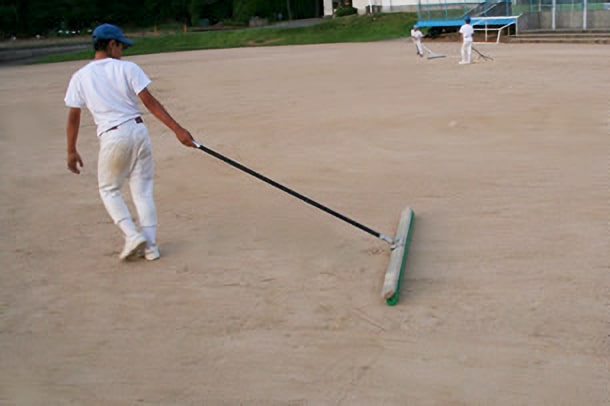
Kendo is a traditional Japanese martial art that cultivates not only technique but also spirit. Especially for elementary school students, the Kendo grade examination is a major milestone in their personal growth.
Through this screening, children learn the basic techniques of Kendo and grow in etiquette and spirituality.
However, for many elementary school students and their parents, the content and preparation methods for the grade examination may be unknown.
In this article, we will introduce the contents of the Kendo level examination that elementary school students take on, as well as specific measures to pass.
It also provides advice on how parents should support their children.
We hope that this guide will be of valuable assistance to elementary school students and their parents who are about to take the Kendo level examination as they walk the path of Kendo.
目次
- 1 Introduction: What is the Kendo grade examination for elementary school students?
- 2 Judging content: Basics of Kendo level judging for elementary school students
- 3 Key points in the examination: Important things for passing the exam
- 4 Preparation method: Practice points to pass the Kendo level examination
- 5 Advice for parents: What you can do to support your child
- 6 Summary: What you can gain through the Kendo grade examination
Introduction: What is the Kendo grade examination for elementary school students?
The Kendo grade examination is an important process for those learning Kendo to prove that they have gradually mastered the techniques and knowledge.
Especially for elementary school students, the grade examination can be said to be one of the first major challenges they face in Kendo.
Through this examination, the children are able to solidify their foundation in Kendo and are encouraged to develop their etiquette and spirit.
Overview of Kendo grade examination
Kendo level examinations are generally held at each stage, from beginner to dan-dan, but elementary school students’ examinations mainly evaluate skills and knowledge from beginner to intermediate levels.
The content of the examination covers the basics of Kendo, such as basic stances, striking techniques, defensive techniques, and kata.
The significance of elementary school students taking the examination
The Kendo grade examination is not just a place to evaluate technique, but also an opportunity for children to experience the many values that can be gained through Kendo.
The following are the main meanings of elementary school students taking the examination.
- Improving your technique : By setting the examination as your goal, you will be more motivated to practice daily, and you will be able to improve your technique.
- Feeling of personal growth : By passing the examination, you can feel that your own efforts are taking shape and showing up in the results. This will also improve your self-confidence.
- Cultivation of etiquette and spirit : During the screening process, you will learn the importance of politeness and mental strength, and you will be able to acquire these as your own.
- Improving social skills : This is a good opportunity to develop cooperative and social skills through interaction with other test takers and examiners.
The Kendo grade examination is a valuable experience for elementary school students that not only helps them improve their Kendo skills, but also helps them grow as human beings.
Through this examination, children can learn the essence of Kendo and gain many values that will be useful throughout their lives.

Judging content: Basics of Kendo level judging for elementary school students
In the kendo grade examination, which elementary school students take on, the basic techniques, forms, and mental aspects of kendo are comprehensively evaluated.
There are differences in the level and content of the skills required depending on the grade, but here we will explain the details of the techniques and forms that are generally required in the grade examination.
Technology evaluation
In the Kendo grade examination, the following basic techniques are evaluated:
- Basic posture : Are you in the correct Kendo posture? The position of your feet, the direction of your body, and the way you hold your sword will be evaluated.
- Basic Uchi : Accuracy and strength of basic Uchi techniques such as Men, Kote, Do, Tsuki, etc. The movement of the feet and the use of the body when striking are also important evaluation points.
- Applied techniques : At advanced levels, applied techniques that combine multiple techniques or continuous techniques may be required.
Evaluation of shape
Kata is an important element for expressing the technique and spirit of Kendo. The following points will be evaluated in the grade examination for elementary school students.
- Accuracy of shapes : Emphasis is placed on whether each shape is performed accurately, with particular emphasis on the flow of movements and how they stop.
- Understanding of Kata : Students will be evaluated on how well they understand and express the philosophy of Kendo and the intent of the techniques through Kata.
Mental evaluation
In the Kendo grade examination, not only the technique but also the mental aspects are important points of evaluation.
- Concentration : Are you able to maintain a consistently high level of concentration during the examination?
- Politeness : Are appropriate etiquette observed from the beginning to the end of the examination?
- Mental strength : Your willingness to take on challenges and your spirit when performing techniques will be evaluated.
These technical, formal, and mental factors are comprehensively evaluated in the Kendo-level examination, which elementary school students participate in.
When practicing for the grade examination, it is important to hone these points in a well-balanced manner.
As the first step in mastering the art of Kendo, the grade examination will be a valuable learning opportunity for children.

Key points in the examination: Important things for passing the exam
In order to pass the Kendo grade examination, it is essential to understand the points that the examiner places particular emphasis on and prepare to respond to them.
Here we provide a detailed explanation of the technical aspects and other factors that are of particular interest during the review.
Important technical points
Accuracy and faithfulness to the basics
- The judges place great importance on the accuracy of techniques and faithfulness to the basics. The subject of evaluation is whether the basic stance, Uchiwaza, and defensive techniques are properly executed, and whether the Kata is executed accurately.
How to release power and how to use it
- It is also important to not use too much force and be able to exert the appropriate amount of force when needed. Particularly in Kendo, the key to improving your technique is to unleash your techniques without unnecessary force.
How to use your body
- An important part of the evaluation is how you use your body, such as whether you are able to move using your entire body and whether your footwork and striking techniques are linked.
Important points from a mental perspective
concentration and spirit
- In addition to the execution of the technique, the examiners also pay attention to the concentration during the judging and the spirit with which the technique is performed. It requires an attitude of putting all your effort into each technique.
courtesy and attitude
- Kendo is a martial art that also aims for spiritual growth. During the screening process, not only technical aspects but also courtesy and attitude are given equal importance. Your greetings at the beginning and end of the examination, and your attitude toward the examiner and other examinees will be evaluated.
overall performance
- Examiners evaluate candidates’ overall performance, not just technical accuracy. Technical, mental, and attitude are all important factors for passing the exam.
When preparing for the examination, be aware of these points and prepare to perform at your best on the day of the examination.
To pass the exam, it is most important to thoroughly hone the basics through daily practice.

Preparation method: Practice points to pass the Kendo level examination
In order to pass the Kendo level examination, there are several points to be aware of during daily practice.
By incorporating effective practice methods, you can improve your technique, mind, and attitude to succeed in your examination.
Thorough basic technology
- Repeated practice of basic postures and techniques : While maintaining the correct basic posture of Kendo, you will repeatedly practice basic techniques such as men, kote, todo, and tsuki. Improving the accuracy of basic techniques is the basis for success in the examination.
practice of shapes
- Emphasis on Kata practice : Kata is the expression of the technique and spirit of Kendo. Understand the meaning of each shape and practice expressing it with accurate movements. It is also important to actively seek feedback from teachers and upperclassmen, find areas for improvement, and make corrections.
Practicing applied techniques
- Practicing applied techniques : Once you have reached a certain level of basic techniques, you will also try practicing applied techniques and continuous techniques. Learn practical skills through practice sessions and practice matches that simulate actual matches.
mental training
- Improving concentration : Meditation and breathing exercises are effective in improving not only momentary concentration but also long-term concentration.
- Practice good manners : We value greetings at the beginning and end of rehearsals, and we strive to maintain a polite attitude in everyday life. This is directly related to the evaluation in the examination.
Improving overall physical fitness
- Improving physical strength and stamina : In addition to practicing Kendo, it is also important to incorporate other exercises such as running and swimming to improve your overall physical strength and stamina.
When practicing for the Kendo level examination, it is important to incorporate these points into your daily practice and work with all your heart and soul.
Judging is an opportunity to show the results of your accumulated training and efforts.
Being faithful to the basics and continuing to practice hard will lead to success in the examination.

Advice for parents: What you can do to support your child
When elementary school students take on the Kendo level examination, the support and understanding of their parents is extremely important for them.
Kendo grade examinations are a big challenge for children, and encouragement and support from parents will lead to confidence and a sense of security.
Below is some advice on how parents can help and be prepared.
show active interest
- Watch your child practice : If possible, keep your child motivated by observing their practice regularly and recognizing and praising their progress.
- Learn about Kendo : Learning about the basics, history, and spirit of Kendo will help your child understand what they’re getting into and show a deeper interest.
provide reassuring support
- Support transportation to and from practice : Create an environment where your child can concentrate on Kendo by actively providing transportation to and from practice.
- Take care of your kendo tools together : Taking care of your kendo tools is one of the important etiquettes when practicing kendo. At first, learn how to care for your child together and support them until they are able to do it themselves.
emotional support
- Stay positive : Recognize your child’s efforts and always provide positive feedback, regardless of the outcome of the assessment.
- Encourage learning from setbacks and failures : Even if you don’t get the results you expected during the screening, think together about what you can learn from the experience and find its value as a next step.
value communication
- Listen to your child’s thoughts about kendo and judging : It is important to listen carefully to your child’s thoughts about kendo and concerns about judging, and to show understanding and empathy.
- Communication with your child’s kendo teacher : Communicate regularly with your child’s kendo teacher regarding your child’s progress and advice regarding examinations, etc. to make your support at home more effective.
In order to support children who are taking on the Kendo level examination, it is extremely important to provide not only technical support but also psychological support.
With the understanding and support of parents, children will be able to face the examination with more confidence.

Summary: What you can gain through the Kendo grade examination
The Kendo grade examination provides a valuable opportunity for elementary school students to grow beyond simply evaluating their skills.
The benefits of this experience are wide-ranging and play an important role in children’s lives.
The following summarizes the main experiences and growth that elementary school students can gain through the Kendo grade examination.
technological growth
- The Kendo grade examination allows students to experience the step-by-step process of improving their skills, from learning basic techniques to stepping up to applied techniques. As you prepare for the examination, you can hone your skills through repeated practice.
spiritual maturity
- Your mental strength will also be tested during the judging process. There are plenty of opportunities to contribute to your mental growth, such as being prepared to take on challenges, improving your ability to recover from failure, and improving your concentration.
- The Kendo grade examination is also an opportunity to learn important values in social life, such as courtesy, cooperation, and respect, through interaction with other examinees and examiners.
joy of self-actualization
- Passing the grade examination is a great opportunity to feel the joy of self-actualization. The experience of seeing one’s efforts bear fruit leads to increased self-confidence and self-esteem.
Understanding of traditional culture
- Through the Kendo grade examination, you will deepen your understanding not only of Kendo techniques, but also of the Japanese tradition and culture behind it. This is the foundation for children to respect and be proud of their own culture.
These experiences and growth during the Kendo level examination will be a valuable asset for elementary school students.
The lessons and values learned through Kendo will be of great help in your studies at school and in your future life.
The Kendo grade examination is not just a place to compete in technique, but an important step in growing as a person.





